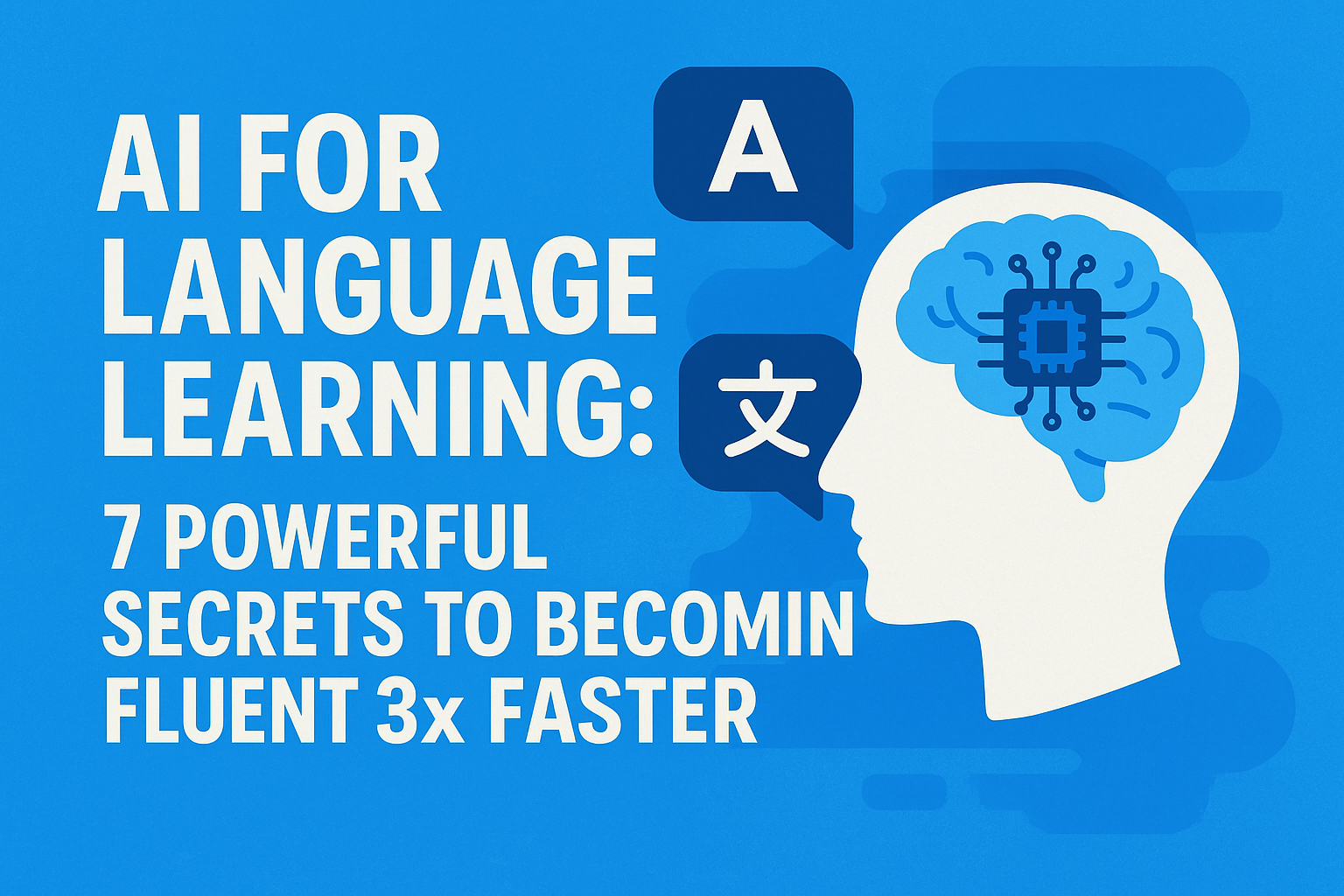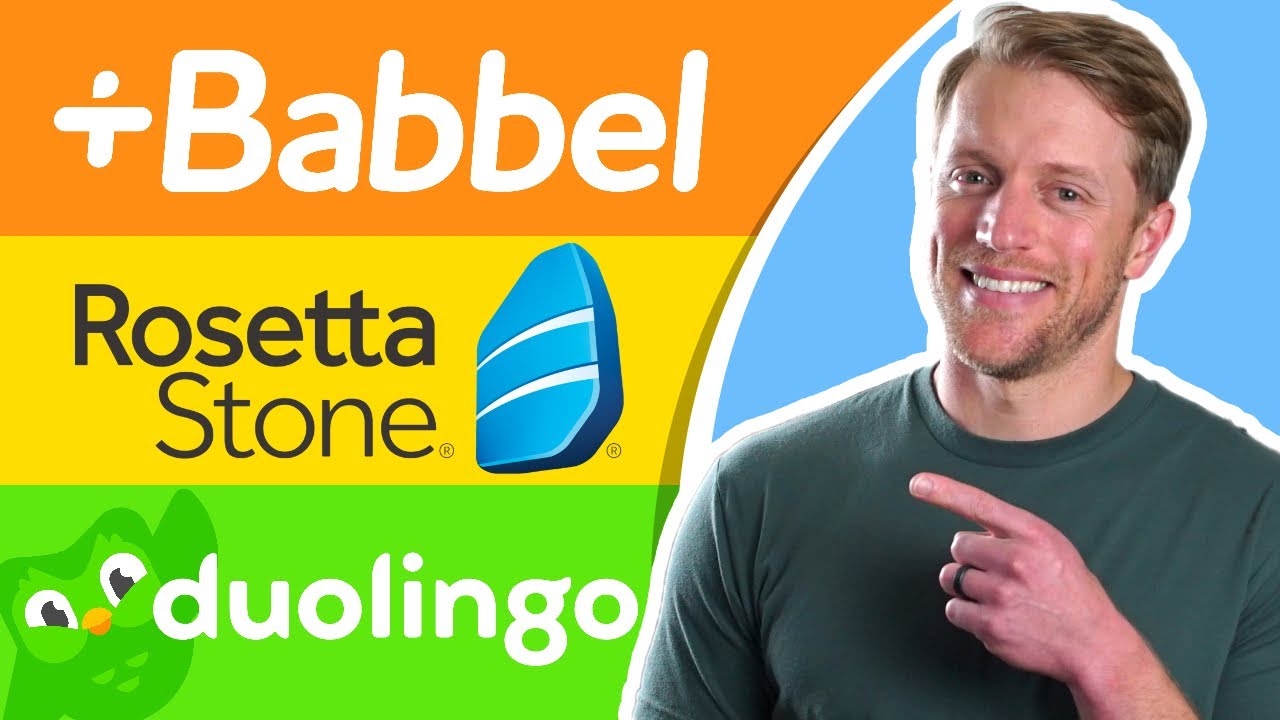In the fast-paced globalized business world, effective communication often transcends geographical and linguistic boundaries.
Whether you’re a marketing manager expanding into new international markets, a business owner negotiating overseas deals, or part of a B2B SaaS team interacting with global clients, a deficiency in language skills can be a significant bottleneck.
It leads to misunderstandings, missed opportunities, and hinders the ability to connect authentically with diverse audiences – a critical strategic disadvantage. This limitation isn’t just an inconvenience; it directly impacts your bottom line and competitive positioning. However, the rise of sophisticated Artificial Intelligence (AI) presents a transformative solution for overcoming these language barriers.
Let’s explore how leveraging AI for language learning strategically can accelerate your linguistic capabilities dramatically.
This isn’t about replacing human effort but augmenting it. Think of AI not as doing the work for you, but as providing powerful insights, personalized practice, and instant feedback, fundamentally changing the learning landscape.
Table of Contents
The Strategic Toolkit: Your AI for language learning
Building a robust strategy requires the right tools and a clear approach. Before diving into implementation, establish a solid strategic foundation:
- Define Your Objectives: Why are you learning a new language? Is it for better client relations in a specific market, understanding industry news, or personal development? Clearly defined, business-aligned goals will shape your AI for language learning journey and keep you motivated.
- Assess Your Current Level: Knowing your starting point allows you to set realistic milestones and choose appropriate AI tools that cater to different proficiency levels.
- Integrate Human Expertise: While AI offers incredible efficiency, nuanced understanding and cultural context often require human guidance. Combine AI for language learning tools with feedback from language partners or native speakers.
AI-Powered Tools to Accelerate Your Fluency: Several powerful tools harness AI specifically for language acquisition. Here are a few prominent examples:
- Babbel: Babbel utilizes AI to personalize lessons, adapt to your learning pace, and provide speech recognition for pronunciation practice.
- Duolingo: While popular, Duolingo increasingly incorporates AI features for adaptive learning paths and personalized feedback.
- Memrise: Memrise leverages AI-powered spaced repetition algorithms to help you memorize vocabulary effectively over time.
These tools are not just flashcard apps; they represent the practical application of AI for language learning, designed to make the process more efficient and targeted. Remember to guide the AI effectively by practicing consistently and seeking external validation when needed.
Time & Resource Investment: The ROI of AI-Powered Learning
Let’s put AI’s potential in perspective by comparing traditional methods with an AI-augmented approach.
Manual Method:
- Finding tailored resources: Significant time (hours).
- Structuring study plans: Requires personal effort, trial and error.
- Finding practice partners: Limited availability, inconsistent feedback.
- Repeating material: Manual review, inefficient repetition.
AI for language learning:
- Personalized learning paths: AI sets curriculum automatically.
- Instant feedback loops: Grammar checks, pronunciation correction in real-time.
- Adaptive difficulty: Content adjusts based on performance, preventing boredom or frustration.
- Intelligent review scheduling: AI reminds you precisely when to revisit vocabulary or grammar points using spaced repetition.
Imagine a marketing manager spending just 1 hour per day on AI for language learning. Using traditional resources, they might achieve moderate progress, needing weeks or months for complex tasks like writing short emails confidently. With AI, the same time investment could yield significantly faster results – perhaps achieving the ability to conduct basic professional conversations in half the standard time, or becoming comfortable with industry-specific jargon for a target region much sooner. This translates to a 30-50% reduction in time required to reach key fluency milestones for professional purposes. The resources saved (time, frustration, potential need for expensive tutors) represent a substantial ROI for the individual, and by extension, the business they serve.
The Implementation Blueprint: A Strategic, Step-by-Step Approach
Ready to leverage AI for language learning? Here’s how you can strategically implement an AI-powered language learning plan:
Step 1: Choose Your AI Ally: Select 1-2 reputable platforms like Babbel or Duolingo based on your specific goals (business, travel, casual) and learning style. Consider features like speech recognition, personalized feedback, and offline capabilities.
Step 2: Set Clear Business Objectives & Baseline: Define what “fluency” means for your needs in the professional context. Identify specific skills to develop first (reading industry news, client emails, presentations). Assess your current level honestly.
Step 3: Create a Structured Learning Schedule: Integrate AI for language learning into your routine consistently. Even 15-20 minutes daily is powerful, more is better. Aim for variety – use apps for vocabulary, watch AI-curated news for comprehension, listen to AI-guided podcasts.
Step 4: Activate the AI Features: Go beyond just using the app. Actively utilize AI feedback mechanisms: record your pronunciation, ask AI grammar questions, let it correct your writing samples.
Step 5: Supplement with Human Interaction: Don’t neglect real-world practice. Find language exchange partners, join online communities, or take a few sessions with a human tutor to refine your conversational skills and understand cultural nuances, guiding the AI tool’s learning.
Step 6: Track Your Progress: Most AI apps offer progress tracking. Pay attention to this data, and adjust your focus areas based on the AI’s feedback and your own milestones. Celebrate small wins!
> Pro-Tip: Treat AI learning like any other strategic initiative. Set specific, measurable weekly goals tracked in a shared document or project management tool. Regularly review progress with your team (if applicable) or hold yourself accountable. >
This structured approach ensures you’re not just passively consuming AI content, but actively using it as a strategic tool for accelerated growth with AI for language learning.
Measuring Success: KPIs & ROI for Your Language Learning Effort
To gauge the effectiveness of your AI-powered language strategy (AI for language learning) and demonstrate its value (especially if company-sponsored), track the following business-centric KPIs:
| Metric | What It Tells You |
|---|---|
| Consistency Score | Measures frequency and duration of AI tool usage. Higher scores indicate discipline. |
| New Vocabulary Acquired | Tracks growth in vocabulary relevant to your business objectives (e.g., market terms). |
| Grammar Proficiency | Assesses improvement in AI-identified grammar areas, reducing errors in communication. |
| Time Saved per Task | Quantifies the reduction in research or translation time needed for tasks. |
| Confidence Score (Self/Peer) | Evaluates perceived confidence in using the language professionally. |
| Customer/Client Feedback | Qualitative measure from interactions (if applicable) regarding communication clarity. |
These KPIs, combined with the quantified time savings discussed earlier, provide concrete data on the return on investment of utilizing AI for language learning. For instance, if you’re spending less than 30 minutes per day on learning yet mastering complex industry terminology previously requiring hours of manual research, that’s tangible ROI.
Scaling & Advanced Strategies: Pushing Your Language With AI for language learning
Mastering one language is powerful, but AI opens doors to even more growth:
- Leverage AI for Content Creation in Target Languages: Use AI tools to translate and adapt marketing copy, website content, or social media posts for non-native English markets. This requires careful oversight to maintain quality and nuance.
- Develop Multilingual AI Assistants: For businesses managing global customer support, explore integrating AI chatbots that can understand and respond in multiple languages, significantly improving first-contact resolution rates.
- AI-Powered Cultural Intelligence (CQ): Beyond language skills, advanced AI can analyze communication styles, humor, and social norms of different cultures, helping you communicate more effectively and avoid misunderstandings. Combine this with language learning for true cross-cultural competence.
These advanced applications build upon the core fluency foundation, using AI for language learning to enhance broader business communication and engagement.
Strategic Business Applications: Real-World Examples
The benefits of strategic language learning via AI translate directly to various business models:
- B2B SaaS: A founder expanding internationally needs to discuss features and pricing confidently with prospects in Germany, Japan, and Brazil. AI for language learning accelerates this capability, enabling smoother sales cycles.
- E-commerce: An e-commerce manager wants product descriptions appealing to Spanish-speaking audiences in Latin America. Learn a language with AI to understand cultural nuances and effectively market products abroad, potentially increasing sales conversion.
- Digital Agencies: A marketing manager needs to pitch creative campaigns to clients in India and understand feedback nuances in Russian. AI-powered language tools provide rapid fluency, fostering better client relationships and securing international projects.
Common Strategic Pitfalls to Avoid
Even with the best intentions, some mistakes can derail an AI language learning strategy:
- Treating AI as a Magic Solution: Relying solely on algorithms without active engagement, practice, and critical thinking leads to superficial learning and poor retention. AI for language learning requires your input and application.
- Ignoring Quality and Nuance: AI can make mistakes and lack deep cultural understanding. Avoid accepting verbatim translations without editing and supplementing with cultural context. Fluency isn’t just about words; it’s about understanding meaning and appropriateness.
- Neglecting Listening and Speaking Practice: AI excels at reading and writing, but developing strong listening comprehension and oral fluency often requires additional focus (e.g., using voice memos, recording yourself, practicing speaking with native speakers).
Building Your Content Engine: Systems & Automation
The true power of AI for language learning lies in making it a sustainable, automated system. Think beyond individual skill development:
- Automate Content Input: Use AI to automatically curate news, articles, or industry reports in your target language(s). This constant exposure reinforces vocabulary and understanding organically.
- Integrate Language Skills into Workflow: Can AI-powered translation tools assist your global team in understanding project requirements? Can AI help summarize key points from client emails in your native language?
- Develop a Feedback Loop: Use AI tools to solicit feedback on your evolving language skills (e.g., ask a native speaker via a language app community) and integrate this data into your learning plan.
- Flywheel Effect: The more you interact in your new language, the more confident you become, which encourages more usage. This increased usage provides more data for the AI, refining its feedback and personalization, creating a self-reinforcing cycle.
This strategic systematization turns language learning from a sporadic effort into an integral part of your business growth engine.
Conclusion
Integrating AI for language learning strategically is no longer optional; it’s becoming a necessity for staying competitive in an interconnected world. AI dramatically accelerates the path to fluency by offering unparalleled adaptability, personalized feedback, and instant accessibility. By choosing the right tools, establishing clear goals, and avoiding common pitfalls, you can unlock new levels of communication, broaden your horizons, and significantly enhance your business’s reach and effectiveness.
Ready to unlock the power of AI for your language goals?
We invite you to share your specific language learning challenges or goals in the comments below – let’s discuss how you can leverage these tools effectively for your business.
For a personalized strategy session or to explore how AI can drive growth for your venture, schedule a call with our experts here.
Frequently Asked Questions (FAQs)
Q1: Is learning with AI for language learning truly effective for achieving fluency?
A1: Yes, AI-powered language learning tools are highly effective for developing core skills like vocabulary, grammar, and comprehension. They provide personalized practice and instant feedback. However, fluency also requires consistent effort, active application, and ideally, exposure to real-world usage. Think of AI as a powerful accelerator, not a replacement for engagement.
Q2: What is the cost involved in learning a language using AI tools?
A2: Costs vary widely. Some apps offer free versions with limited features and ads, while others provide premium subscriptions starting from around $5-10 USD per month. Many find this represents excellent value compared to traditional courses or tutors, especially when considering the accelerated timeline and scalability. Explore free trials first!
Q3: How complex is it to implement AI for language learning?
A3: Modern AI language learning tools are designed for simplicity. You don’t need a technical background. Download the app, sign up, and start learning. The real complexity lies in consistency and integrating this into your broader goals. The implementation is straightforward; mastering the language and applying it effectively requires ongoing commitment.





